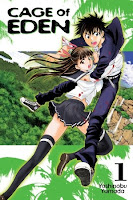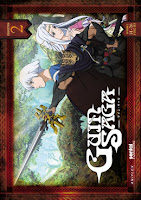 Author: Kaoru Kurimoto
Author: Kaoru Kurimoto
Illustrator: Naoyuki Kato
Translator: Alexander O. Smith and Elye J. Alexander
U.S. publisher: Vertical
ISBN: 9781934287200
Released: July 2008
Original release: 1980
Awards: Seiun Award
The Marches King is the fifth and final volume in “The Marches Episode,” the first major story arc in Kaoru Kurimoto’s fantasy epic The Guin Saga. While “The Marches Episode” is the only part of the light novel series available in English, The Guin Saga lasted for one hundred thirty volumes in its native Japan, winning the 2010 Seiun Award for long fiction. The Marches King was originally published in Japan in 1980. Vertical released the English translation of the novel by Alexander O. Smith and Elye J. Alexander in 2008, retaining the illustrations by Naoyuki Kato. Even though The Guin Saga hasn’t been nearly as successful in English as it has been in Japanese, the series is still very important to the development of the light novel form and Japanese fantasy literature. The Guin Saga was an influence on and source of inspiration for many Japanese creators.
It is only a matter of time before the Sem and the secrets of Nospherus will fall to the Mongauli army. Although they have managed to deal significant blows to the indavers’ morale and nearly wiped out the Blue Knights completely, the Sem are still vastly outnumbered and have sustained heavy casualties. When it comes to military prowess and strategy there is no question that the Monguali are superior. The Sem’s only chance is the leopard-headed warrior known as Guin, but he has left the Sem to face the invading army alone as he desperately tries to find and convince the mysterious Lagon to join the their cause. If the giants agree to come to the diminutive Sem’s aid they may be able to repel the Mongauli forces. But until Guin returns with reinforcements, the Sem are on their own. And if Guin fails the Sem will be annihilated; the Mongauli are preparing for a final frontal assault that they cannot lose.
From the very beginning of “The Marches Episode,” Kurimoto has known how to write a fantastic battle scene, whether it’s the one-on-one fights that Guin frequently finds himself in, the ambushes and skirmishes of the Sem, or the more coordinated military maneuvers of the Mongauli army. In fact, the fight sequences feature some of the best writing in the series. The scenes are engaging and exciting. Despite the occasional similar setup, the fights never come across as repetitive. I found Kurimoto’s creativity and clarity to be quite impressive when it comes to writing a fight scene. The Marches King is no different as the battle for Nospherus reaches its climax and is finally resolved. Kurimoto doesn’t hold back, either. The fighting is brutal and the ramifications are gruesome. There will be casualties in war and it is not often pretty.
Although The Guin Saga was off to a bit of a weak start with the first book, each volume improved and built upon the volumes that preceded it. By the time I reached The Marches King, I was already sold on the series and want to read more. “The Marches Episode” is a complete story in itself but it is obvious, especially after reading the afterword which puts the arc into mythological and historical context within the world that Kurimoto has created, that there is still plenty of story to be told. Kurimoto’s worldbuilding, while not always particularly original as she makes very good use of fairly standard fantasy archetypes and tropes, is excellent. Throughout “The Marches Episode” she has given hints about what is to come and has established a solid groundwork for future stories. Unfortunately, it is very unlikely that any of the later novels in The Guin Saga will be translated into English. However, I am very glad to at least have the beginning of such an influential series available.








